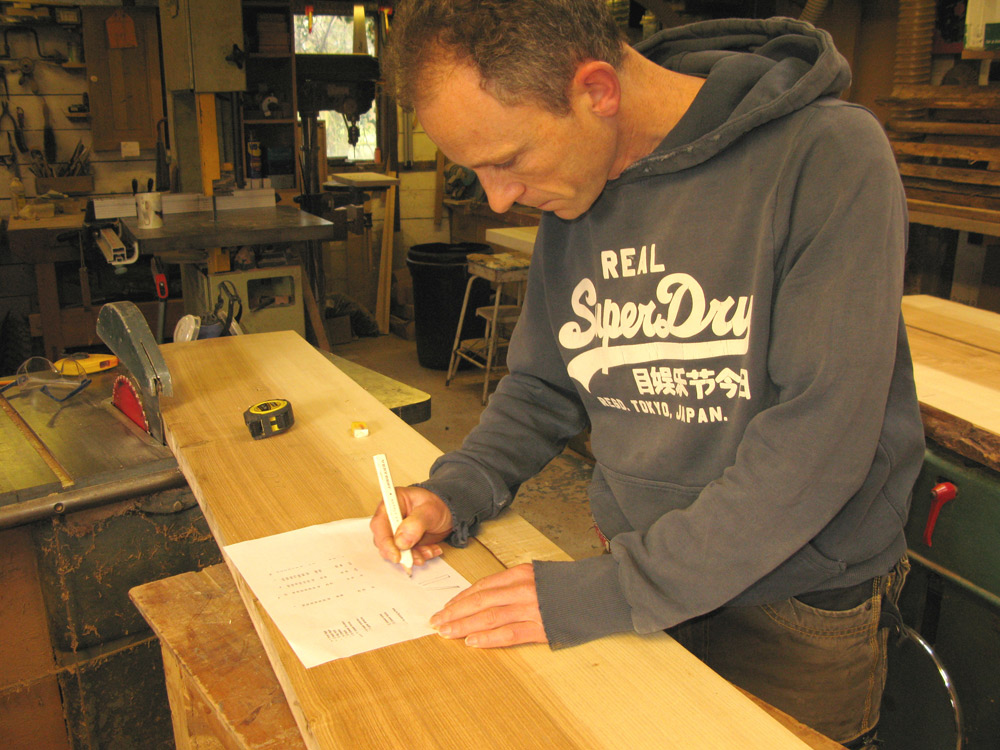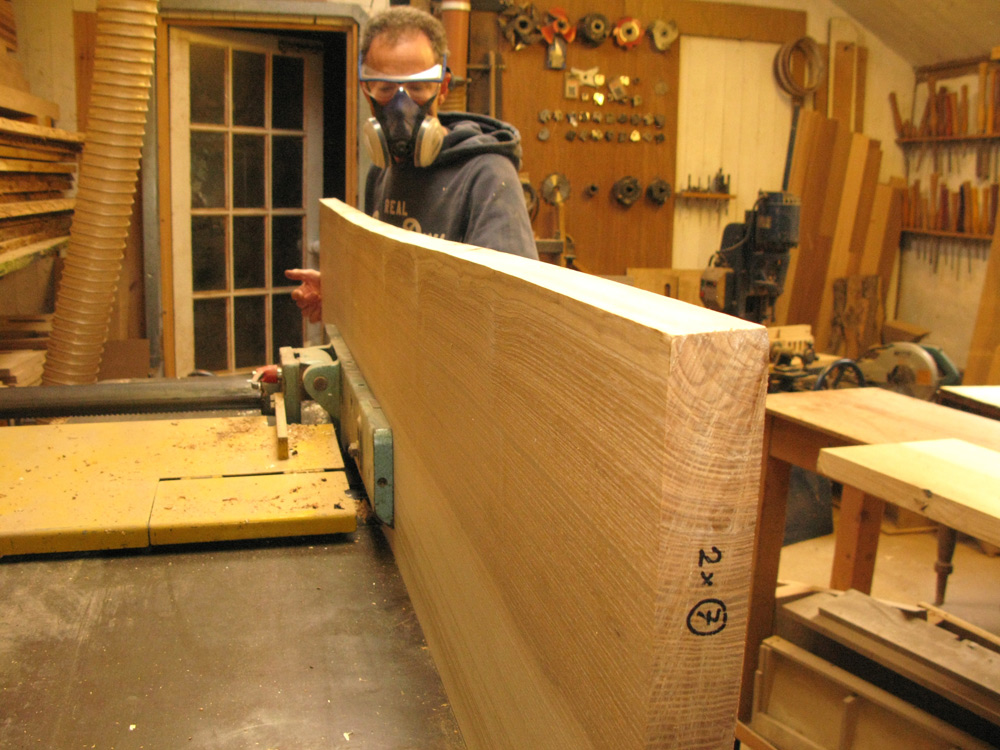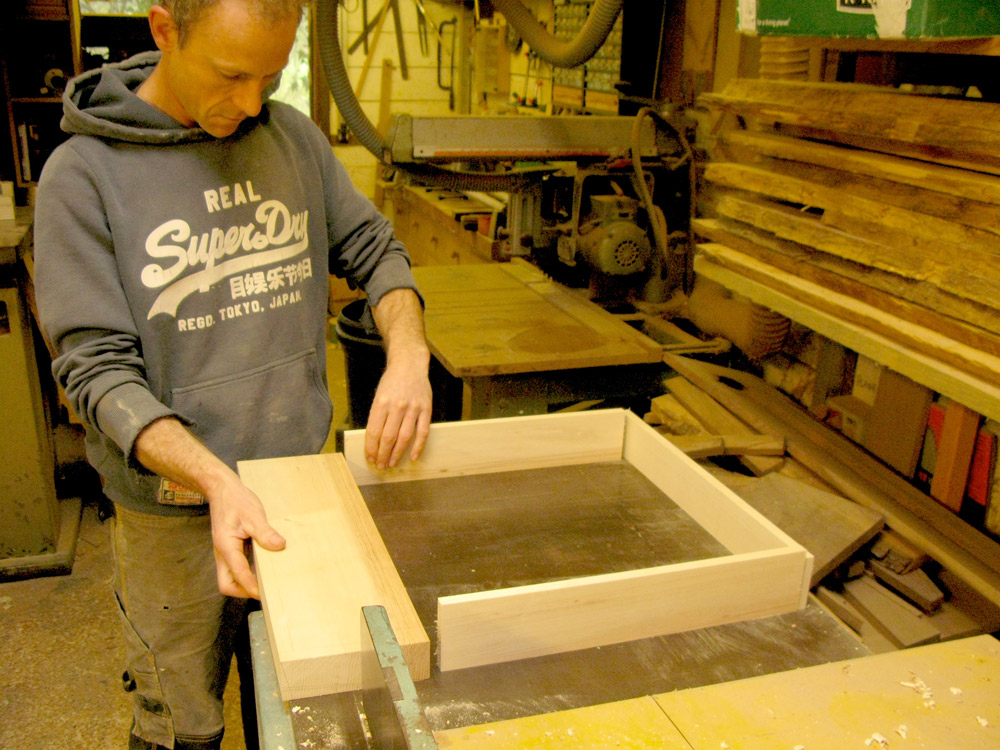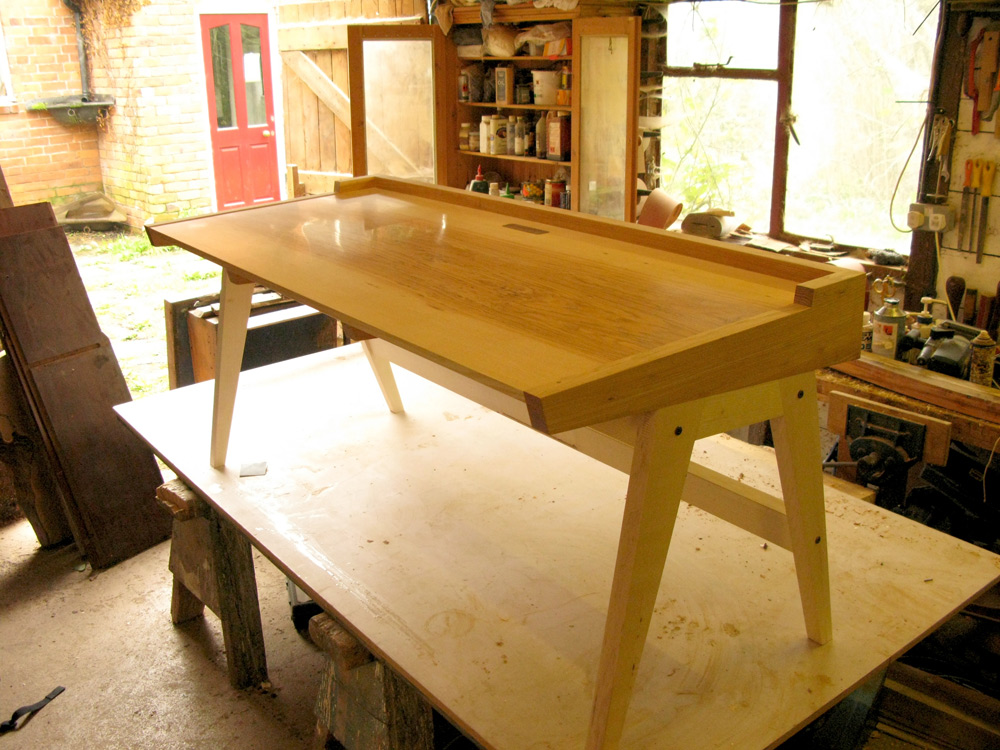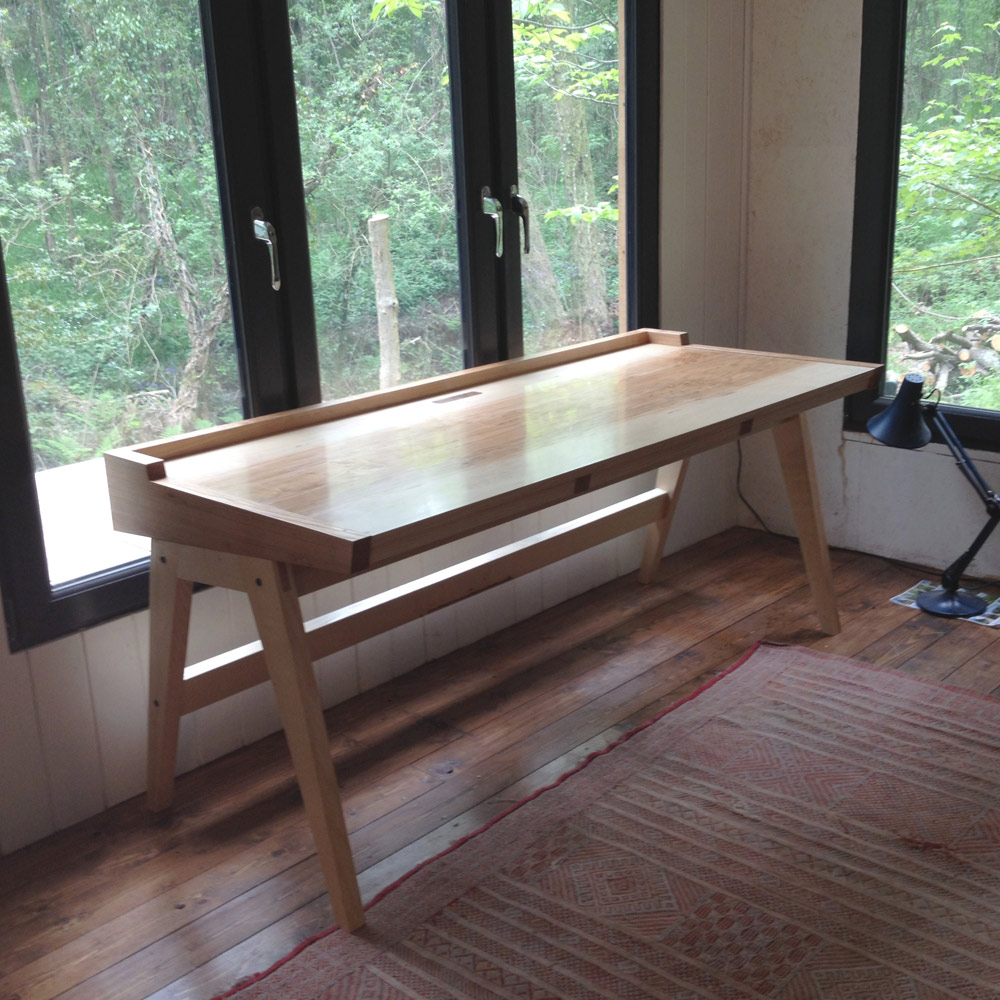Andy Dix
Andy Dix is a furniture maker based in Hay-on-Wye. He made a writer’s desk for me, from my ash. The following extract is taken from ‘The Man Who Made Things Out of Trees’.
‘It’s good that you’re here today,’ Andy said, clearing a workbench. ‘We can choose the wood for the writing surface together. It’s interesting, your timber. There is no distinction between the sapwood and the heartwood of your tree, but there is a dramatic change where the wood colours in the middle. They could be two different trees.’
The coloured wood, often known as olive ash and common in old ash trees, is caused by the build-up of pigmented material that works its way into the dead cells close to the centre of the tree. According to John Evelyn, it was highly valued in the seventeenth century, when woodworkers called coloured ash ‘green Ebony’.
‘It’s good that you’re here today,’ Andy said, clearing a workbench. ‘We can choose the wood for the writing surface together. It’s interesting, your timber. There is no distinction between the sapwood and the heartwood of your tree, but there is a dramatic change where the wood colours in the middle. They could be two different trees.’
The coloured wood, often known as olive ash and common in old ash trees, is caused by the build-up of pigmented material that works its way into the dead cells close to the centre of the tree. According to John Evelyn, it was highly valued in the seventeenth century, when woodworkers called coloured ash ‘green Ebony’.
Andy explained how the legs would all come from the light, typically creamy-white wood; the back of the desk and the side pieces around the surface would be in the darker brown wood, from the heart of the tree; the three draw-fronts would be light-coloured, in contrast to the darker pieces that separated them. ‘That makes sense of the tree. We don’t want to over-complicate it,’ Andy said. Together we manoeuvred the boards around the machinery and onto the main workbench.
Perhaps the most important design consideration with wooden furniture is allowing for any movement in the wood: movement can occur following changes in the temperature and humidity in the environment where the furniture lives, Andy explained. Wood remains hygroscopic – it is constantly trying to attain a state of equilibrium with the air surrounding it – forever. The trick is to make sure any movement pursuant to a change in the moisture content in the wood, for example when the piece is moved from the workshop to the client’s centrally heated home, will be swallowed by the structure, without splitting any components.
Perhaps the most important design consideration with wooden furniture is allowing for any movement in the wood: movement can occur following changes in the temperature and humidity in the environment where the furniture lives, Andy explained. Wood remains hygroscopic – it is constantly trying to attain a state of equilibrium with the air surrounding it – forever. The trick is to make sure any movement pursuant to a change in the moisture content in the wood, for example when the piece is moved from the workshop to the client’s centrally heated home, will be swallowed by the structure, without splitting any components.
Andy wanted to create the writing surface out of two different boards, by sawing or ‘ripping’ one wide board into two pieces and inserting another piece, from a different part of the tree, into the middle. ‘This way we can reverse the direction of the grain in the middle piece. When moisture is taken up by this top surface as a whole, the outside sections will want to cup or curve in one direction and the middle piece will want to curve in the other direction. To a large extent, they’ll cancel each other out.’ Andy said.
There was one obvious candidate for the one-inch thick board that would be ripped down the middle. At the sides of this board, the wood was creamy and pale with arrow-straight, parallel lines of grain. As there was some coloration in the middle of the wood – a gentle fade from creamy-white through camel to cappuccino – Andy wanted to find a centre piece that picked up that change, so that the hue would flow from light to dark to light again across the whole writing surface. He also wanted to find the piece of timber with the most interesting ‘figure’.
There was one obvious candidate for the one-inch thick board that would be ripped down the middle. At the sides of this board, the wood was creamy and pale with arrow-straight, parallel lines of grain. As there was some coloration in the middle of the wood – a gentle fade from creamy-white through camel to cappuccino – Andy wanted to find a centre piece that picked up that change, so that the hue would flow from light to dark to light again across the whole writing surface. He also wanted to find the piece of timber with the most interesting ‘figure’.
Woodworkers use the term ‘figure’ to collectively describe the markings on the surfaces of wood. Figure is the result of a combination of all the anatomical features, from normal wood structure, including growth rings, to various abnormalities like knots. Generally, the more inconsistent the grain and the greater the frequency of abnormalities, the more pronounced the figure is. Figure comes in innumerable forms, many of which are distinctive and characteristic of particular tree species. Woodworkers have a delightful vocabulary of words and phrases to describe figure: ribbon, bird’s eye, flame, fiddleback, quilted, blistered, stripe, broken stripe and dimpling figure are just a few.
We’re looking for any eye-catching details like swirling grain, knots, evidence of any traumas the tree suffered long ago and for abnormalities in growth,’ Andy said, levering a piece of timber out. It was a ten-inch-wide, six-foot-long board of discoloured wood from the centre of my tree. There was detail in the figure, but it was difficult to make out. Andy said it was a carpenter’s hunch at this point: passing the board through the thicknessing machine would make the figure more visible, by neatly cutting the fibres that had previously been roughly torn by the saw at the sawmill.
‘Looking at a rough sawn board is a bit like looking at the surface of water riffled by wind. You only get the vaguest impression of what lies beneath. Pass that board over a planer, though, and it’s like looking into the water through a glass-bottom bucket,’ Andy said.
The transformation was extraordinary. The machine took a layer of skin off both sides of the board to reveal what was once the dynamic internal system of the tree. There was plenty of interesting detail and variation. Andy passed it through the thicknessing machine again: the figure was even more clearly defined, like a body-builder tensing his forearm to lift the veins. The texture, hue and colour of this board would perfectly complement the one we had already selected.
The transformation was extraordinary. The machine took a layer of skin off both sides of the board to reveal what was once the dynamic internal system of the tree. There was plenty of interesting detail and variation. Andy passed it through the thicknessing machine again: the figure was even more clearly defined, like a body-builder tensing his forearm to lift the veins. The texture, hue and colour of this board would perfectly complement the one we had already selected.
